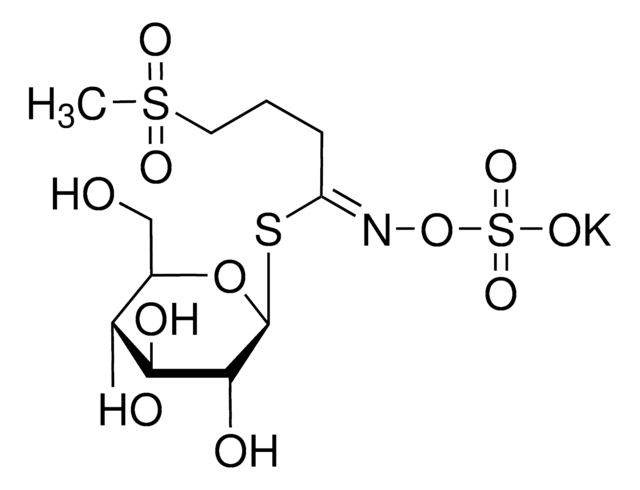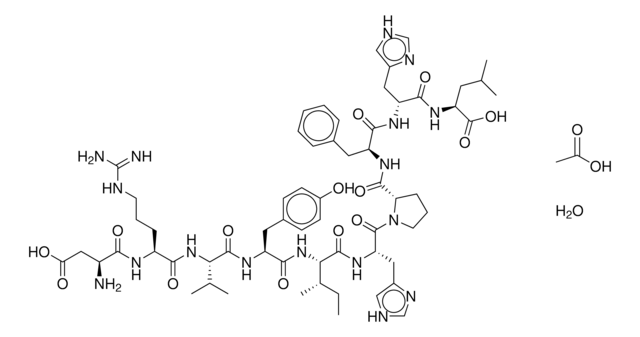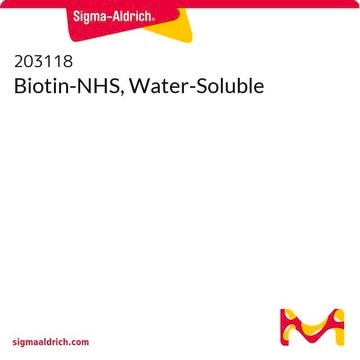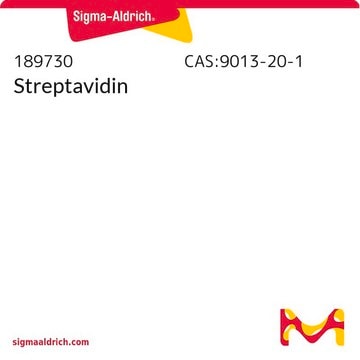QBD10009
Biotin-dPEG®4-TFP ester
Sinonimo/i:
Polyethylene glycol
About This Item
Prodotti consigliati
Saggio
>90%
Forma fisica
solid or viscous liquid
Impiego in reazioni chimiche
reaction type: Biotinylations
reaction type: Biotinylations
reactivity: amine reactive
reagent type: cross-linking reagent
Architettura del polimero
shape: linear
functionality: monofunctional
Condizioni di spedizione
ambient
Temperatura di conservazione
−20°C
Stringa SMILE
O=C(CCCCC1SCC(N2)C1NC2=O)NCCOCCOCCOCCOCCC(OC3=C(C(F)=CC(F)=C3F)F)=O
Applicazioni
Caratteristiche e vantaggi
Note legali
Codice della classe di stoccaggio
11 - Combustible Solids
Classe di pericolosità dell'acqua (WGK)
WGK 3
Punto d’infiammabilità (°F)
Not applicable
Punto d’infiammabilità (°C)
Not applicable
Certificati d'analisi (COA)
Cerca il Certificati d'analisi (COA) digitando il numero di lotto/batch corrispondente. I numeri di lotto o di batch sono stampati sull'etichetta dei prodotti dopo la parola ‘Lotto’ o ‘Batch’.
Possiedi già questo prodotto?
I documenti relativi ai prodotti acquistati recentemente sono disponibili nell’Archivio dei documenti.
I clienti hanno visto anche
Il team dei nostri ricercatori vanta grande esperienza in tutte le aree della ricerca quali Life Science, scienza dei materiali, sintesi chimica, cromatografia, discipline analitiche, ecc..
Contatta l'Assistenza Tecnica.
















